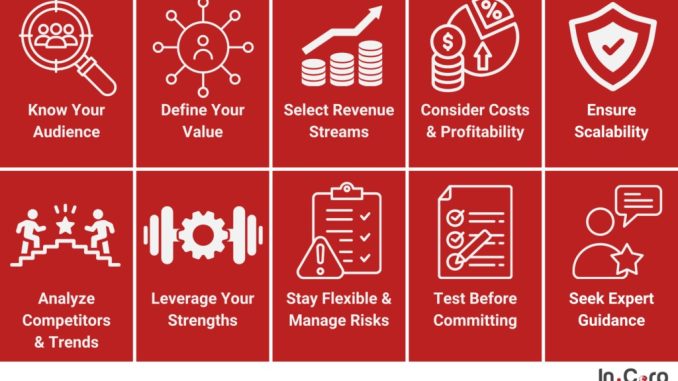
Choosing the right business model is one of the most critical decisions an entrepreneur will make. It’s not just about how a company earns revenue—it defines the entire structure of the business, from how it delivers value to customers to how it sustains operations and scales for growth. In essence, a business model is the blueprint for turning an idea into a functional, profitable enterprise. And while creativity and ambition are vital, the wrong model can make even the best ideas struggle to survive.
At the heart of the decision lies a fundamental question: how will the business create, deliver, and capture value? This is more complex than simply deciding what to sell. It’s about understanding the ecosystem around the product or service. Will you sell directly to consumers, or will your offering be part of a larger supply chain? Will customers pay a one-time fee, subscribe monthly, or gain access through a freemium plan that monetizes later? Each of these choices affects everything from pricing and marketing to logistics and customer service.
Understanding the market is the first step. A business model should align with how customers already behave—or it should offer them such a compelling alternative that they’re willing to change. For example, the rise of subscription services has transformed industries like software, entertainment, and even food. Customers have shown they value convenience and predictability. Netflix didn’t invent video streaming, but it matched its model to emerging consumer preferences better than its competitors did. Entrepreneurs need to study their target audience closely, identifying not just what they need, but how they prefer to access and pay for it.
Another important consideration is the nature of the product or service itself. Some models naturally fit certain types of offerings. Physical goods often require inventory management and fulfillment, making direct-to-consumer or retail partnerships logical paths. On the other hand, digital products like apps or online courses can benefit from scalable models like subscriptions or licensing. The key is to choose a structure that supports the product’s value while keeping operations manageable. Overcomplicating the model, especially early on, can create friction that hinders growth.
Testing assumptions is vital before committing to any one model. Many successful businesses didn’t begin with the model they use today. Instagram started as a location-based check-in app before pivoting to a photo-sharing platform. Slack was born from an internal communication tool built by a team developing a failed game. In both cases, the founders paid close attention to how users were engaging with their products and adapted accordingly. Flexibility and openness to feedback are often more valuable than getting everything right from the start.
Scalability should also factor into the decision. Some models allow a business to grow revenue exponentially without a matching increase in costs. Others require significant reinvestment to grow. A consulting firm, for example, may be profitable with just a few clients but might struggle to scale quickly because its model relies heavily on human capital. In contrast, a software-as-a-service company can add thousands of users with minimal increase in infrastructure costs. Understanding the long-term implications of a model helps founders build with foresight rather than constantly reacting to growing pains.
Risk tolerance plays a role as well. Certain models require significant upfront investment or carry more operational complexity. A brick-and-mortar retail business may demand high startup costs for space, staffing, and inventory, whereas a dropshipping model can minimize those risks by outsourcing logistics. Neither is inherently better, but they suit different entrepreneurs depending on their resources, goals, and comfort with uncertainty. Being honest about what you can sustain emotionally and financially helps prevent future setbacks.
Revenue streams and profitability timelines are other elements to weigh. Some models, such as marketplaces or ad-supported platforms, take longer to turn a profit because they rely on scale. Others, like consulting or product sales, can generate revenue immediately. Entrepreneurs need to be realistic about how long they can operate before breaking even. Cash flow isn’t just an accounting term—it’s the lifeblood of a young business. A mismatch between the model and financial capacity can derail an otherwise promising venture.
Ultimately, choosing a business model is as much an exercise in strategy as it is in self-awareness. It requires aligning the realities of the market, the nature of the product, and the entrepreneur’s own strengths. There is no one-size-fits-all answer, and the most successful founders are those who revisit this decision regularly, adapting as the business evolves. A model that works well in the early stages may need to evolve to support growth, new markets, or shifting consumer behaviors.
Building a business is an ongoing process of learning, iterating, and responding to change. The model you start with is important, but it shouldn’t be a constraint. Instead, think of it as a living framework—one that grows alongside your vision and adapts with the needs of the people you serve. In doing so, you set the stage not just for profitability, but for resilience, relevance, and long-term success.